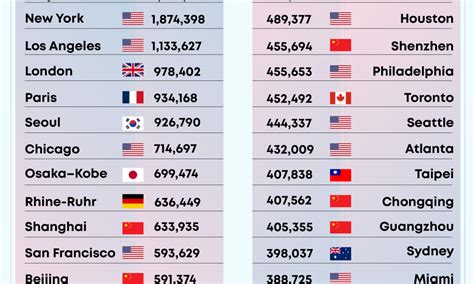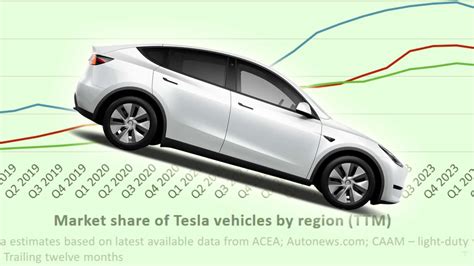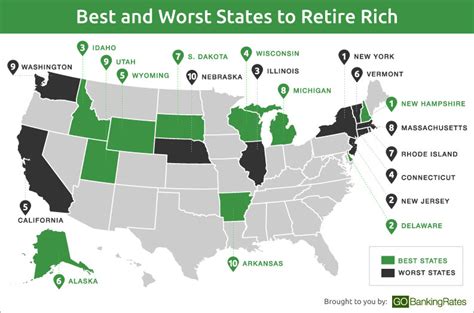
The United States boasts an impressive concentration of wealth, claiming 11 of the world’s top 50 richest cities, according to Henley & Partners and New World Health’s “The Richest Cities in the World 2024” report. New York City reigns supreme, holding the title of the wealthiest city globally with 349,500 millionaires.
New York City’s dominance is fueled by its thriving financial services, real estate, and technology sectors. The city is home to two of the world’s largest stock exchanges, the New York Stock Exchange (NYSE) and Nasdaq, and attracts significant foreign investment, further solidifying its position as a global financial hub. The report highlights that the total wealth held by New York City residents exceeds $3 trillion. Following New York, the affluent enclaves of the Bay Area (San Francisco and Silicon Valley) secure the second position with 305,700 millionaires. Tokyo, previously at the top, now ranks third with 298,300 millionaires.
The report analyzes the wealth held in cities across the globe, focusing specifically on the number of resident millionaires, defined as individuals with investable assets of $1 million or more. This metric provides insights into the concentration of private wealth and economic activity within urban centers.
Other U.S. cities featured prominently in the top 50 include Los Angeles (6th), Chicago (9th), Houston (15th), Dallas (18th), Seattle (20th), Boston (21st), Miami (22nd), and Austin (33rd), underscoring the nation’s robust economic performance and wealth creation across various regions. London, once the world’s wealthiest city, has slipped to fifth place, reflecting shifts in global wealth dynamics. Singapore holds the fourth position, solidifying its reputation as a leading financial center in Asia.
The rise of emerging markets is also evident in the report, with cities like Beijing (10th), Shanghai (11th), and Shenzhen (12th) in China demonstrating substantial growth in their millionaire populations. These cities are benefiting from China’s economic expansion and increasing integration into the global economy. However, no Indian city made it to the top wealthiest cities list according to the report.
The report emphasizes that “millionaire numbers alone do not tell the whole story,” and points to the importance of understanding the dynamics and drivers of wealth creation in different cities. Factors such as economic growth, political stability, and technological innovation play a critical role in attracting and retaining high-net-worth individuals.
Detailed Breakdown of the Top Cities:
- New York City: As the undisputed leader, New York City boasts 349,500 millionaires, a testament to its enduring economic power and cultural influence. The city’s diverse economy, encompassing finance, media, fashion, and technology, contributes to its wealth concentration. Real estate values in Manhattan and other prime locations remain among the highest globally, further attracting wealthy individuals seeking investment opportunities and luxurious lifestyles.
- The Bay Area (San Francisco and Silicon Valley): This region, synonymous with technological innovation and entrepreneurial spirit, is home to 305,700 millionaires. The presence of tech giants like Apple, Google, and Facebook, along with numerous venture capital firms, has fueled significant wealth creation in recent decades. The Bay Area’s high cost of living and competitive job market reflect its economic dynamism and attractiveness to ambitious professionals and entrepreneurs.
- Tokyo: Despite dropping to third place, Tokyo remains a major global financial center with 298,300 millionaires. The city’s strong manufacturing base, advanced technology sector, and sophisticated financial markets contribute to its economic resilience. Tokyo’s cultural heritage, high quality of life, and efficient infrastructure make it an attractive destination for wealthy individuals and businesses.
- Singapore: This island nation has emerged as a leading wealth management hub in Asia, attracting high-net-worth individuals from around the world. Singapore’s stable political environment, favorable tax policies, and strategic location make it an ideal destination for wealth preservation and investment. The city-state boasts 244,800 millionaires and continues to attract significant foreign investment.
- London: Once the world’s wealthiest city, London has slipped to fifth place with 227,000 millionaires. While Brexit and other factors have impacted the city’s economic performance, London remains a major global financial center with a diverse economy and a rich cultural heritage. The city’s real estate market, while facing challenges, continues to attract international investors.
- Los Angeles: Known for its entertainment industry, luxury real estate, and vibrant cultural scene, Los Angeles ranks sixth globally with 212,100 millionaires. The city’s diverse economy, encompassing technology, aerospace, and tourism, contributes to its wealth concentration. Los Angeles’ affluent neighborhoods, such as Beverly Hills and Bel Air, are home to some of the world’s wealthiest individuals.
- Chicago: As a major commercial and financial center in the Midwest, Chicago boasts 120,500 millionaires, securing the ninth position on the list. The city’s diverse economy, encompassing finance, manufacturing, and logistics, contributes to its economic stability. Chicago’s vibrant cultural scene, world-class universities, and affordable cost of living make it an attractive destination for professionals and families.
- Beijing: As China’s capital and political center, Beijing has experienced rapid economic growth in recent decades, leading to a significant increase in its millionaire population. The city now boasts 125,600 millionaires, ranking tenth globally. Beijing’s strong government support, booming technology sector, and expanding consumer market contribute to its economic dynamism.
- Shanghai: As China’s financial hub and largest city, Shanghai has also witnessed substantial wealth creation. The city boasts 123,400 millionaires, ranking eleventh globally. Shanghai’s strategic location, advanced infrastructure, and vibrant business environment make it an attractive destination for foreign investment and multinational corporations.
- Shenzhen: This city in southern China has emerged as a major technology and manufacturing hub, attracting significant investment and talent. Shenzhen boasts 113,300 millionaires, ranking twelfth globally. The city’s entrepreneurial spirit, innovative ecosystem, and proximity to Hong Kong contribute to its economic success.
- Houston: As the energy capital of the United States, Houston boasts 90,900 millionaires, ranking fifteenth globally. The city’s strong energy sector, growing technology industry, and affordable cost of living contribute to its wealth concentration. Houston’s diverse economy and international connections make it an attractive destination for businesses and professionals.
- Dallas: With a thriving economy and a growing population, Dallas boasts 75,000 millionaires, ranking eighteenth globally. The city’s diverse economy, encompassing finance, technology, and healthcare, contributes to its economic resilience. Dallas’ business-friendly environment, affordable cost of living, and central location make it an attractive destination for corporations and entrepreneurs.
- Seattle: Home to tech giants like Amazon and Microsoft, Seattle boasts 74,200 millionaires, ranking twentieth globally. The city’s strong technology sector, growing aerospace industry, and high quality of life contribute to its wealth concentration. Seattle’s proximity to nature, vibrant cultural scene, and innovative ecosystem make it an attractive destination for professionals and families.
- Boston: As a major center for education, healthcare, and technology, Boston boasts 72,000 millionaires, ranking twenty-first globally. The city’s world-class universities, renowned hospitals, and thriving biotechnology industry contribute to its economic strength. Boston’s rich history, vibrant cultural scene, and intellectual atmosphere make it an attractive destination for students, researchers, and professionals.
- Miami: Known for its luxury real estate, vibrant nightlife, and international connections, Miami boasts 67,700 millionaires, ranking twenty-second globally. The city’s growing financial services sector, thriving tourism industry, and favorable tax policies contribute to its wealth concentration. Miami’s beautiful beaches, diverse culture, and cosmopolitan atmosphere make it an attractive destination for wealthy individuals and tourists.
- Austin: As a rapidly growing technology hub, Austin boasts 32,700 millionaires, ranking thirty-third globally. The city’s vibrant startup scene, growing technology industry, and affordable cost of living attract talent and investment from around the world. Austin’s live music scene, outdoor recreational opportunities, and laid-back culture make it an attractive destination for young professionals and entrepreneurs.
Factors Contributing to Wealth Concentration:
The concentration of wealth in these cities can be attributed to a variety of factors, including:
- Economic Growth: Cities with strong economic growth tend to attract businesses, create jobs, and generate wealth.
- Financial Services: Major financial centers like New York, London, and Tokyo are home to numerous banks, investment firms, and other financial institutions that manage vast amounts of wealth.
- Technology Innovation: Cities with thriving technology sectors, such as the Bay Area, Seattle, and Austin, are at the forefront of innovation and wealth creation.
- Real Estate: Cities with high real estate values tend to attract wealthy individuals seeking investment opportunities and luxurious lifestyles.
- Political Stability: Stable political environments are essential for attracting foreign investment and fostering economic growth.
- Education and Research: Cities with world-class universities and research institutions are hubs for innovation and talent.
- Tax Policies: Favorable tax policies can attract wealthy individuals and businesses, leading to wealth concentration.
- Quality of Life: Cities with a high quality of life, including access to healthcare, education, and cultural amenities, are attractive destinations for wealthy individuals and families.
- Global Connectivity: Cities with strong international connections, including airports, ports, and telecommunications infrastructure, are better positioned to participate in the global economy and attract foreign investment.
Impact of Wealth Concentration:
The concentration of wealth in certain cities can have both positive and negative impacts:
- Positive Impacts:
- Economic Growth: Wealthy individuals and businesses contribute to economic growth through investment, job creation, and consumption.
- Innovation: Wealthy individuals often fund research and development, leading to technological innovation and economic progress.
- Philanthropy: Wealthy individuals often donate to charitable causes, supporting education, healthcare, and other social programs.
- Cultural Amenities: Wealthy individuals often support cultural institutions, such as museums, theaters, and orchestras, enhancing the quality of life for all residents.
- Negative Impacts:
- Income Inequality: Wealth concentration can exacerbate income inequality, leading to social unrest and political instability.
- Housing Affordability: High real estate values in wealthy cities can make it difficult for ordinary people to afford housing.
- Social Exclusion: Wealth concentration can lead to social exclusion, as wealthy individuals may live in gated communities and have limited interaction with the broader community.
- Political Influence: Wealthy individuals and businesses may exert undue influence on political decisions, undermining democracy and fairness.
Future Trends:
The “Richest Cities in the World 2024” report highlights several key trends that are likely to shape the future of wealth concentration:
- The Rise of Emerging Markets: Cities in emerging markets, such as Beijing, Shanghai, and Shenzhen, are experiencing rapid growth in their millionaire populations.
- The Growing Importance of Technology: Cities with thriving technology sectors are likely to continue to attract wealth and talent.
- The Shift in Global Power: As economic power shifts from the West to the East, cities in Asia are likely to become increasingly important centers of wealth.
- The Impact of Geopolitical Instability: Geopolitical instability can lead to capital flight and shifts in wealth concentration.
- The Role of Sustainability: Cities that prioritize sustainability and environmental protection are likely to attract wealthy individuals and businesses seeking to invest in a better future.
Conclusion:
The concentration of wealth in certain cities is a complex phenomenon with both positive and negative impacts. Understanding the drivers of wealth concentration and the challenges it poses is essential for policymakers and business leaders seeking to promote inclusive economic growth and sustainable development. The “Richest Cities in the World 2024” report provides valuable insights into the dynamics of global wealth and the factors that are shaping the future of urban economies. While the United States currently dominates the list of wealthiest cities, the rise of emerging markets and the increasing importance of technology suggest that the global landscape of wealth is likely to continue to evolve in the years to come.
Frequently Asked Questions (FAQ):
-
What is the main criterion used in the “Richest Cities in the World 2024” report to determine the wealth of a city?
The primary criterion is the number of resident millionaires, defined as individuals with investable assets of $1 million or more. The report focuses on the concentration of private wealth within urban centers.
-
Which city holds the top position as the wealthiest city in the world according to the report?
New York City holds the top position, with 349,500 millionaires. The report highlights that the total wealth held by New York City residents exceeds $3 trillion.
-
How many cities in the United States are included in the top 50 wealthiest cities list?
Eleven cities in the United States are included in the top 50 wealthiest cities list. These are New York City, The Bay Area (San Francisco and Silicon Valley), Los Angeles, Chicago, Houston, Dallas, Seattle, Boston, Miami, and Austin.
-
How does London’s current ranking compare to its historical position in terms of wealth?
London has slipped to fifth place, despite previously being the world’s wealthiest city. This reflects shifts in global wealth dynamics.
-
What are some of the key factors that contribute to the concentration of wealth in certain cities?
Key factors include: economic growth, thriving financial services and technology sectors, high real estate values, political stability, quality of life, global connectivity, and favorable tax policies. “millionaire numbers alone do not tell the whole story,” as wealth creation depends on economic growth, political stability, and technological innovation.
-
Which Asian cities are showing a significant increase in their millionaire populations? Cities such as Beijing, Shanghai, and Shenzhen in China demonstrate substantial growth in their millionaire populations, reflecting China’s economic expansion.
-
Did any Indian cities make it to the top wealthiest cities list according to the report? No Indian city made it to the top wealthiest cities list according to the report.
-
What is the total wealth held by New York City residents? The total wealth held by New York City residents exceeds $3 trillion.
-
What are the two main stock exchanges located in New York City that contribute to its financial strength? The New York Stock Exchange (NYSE) and Nasdaq, are located in New York City.
-
Besides the number of millionaires, what other factors does the report emphasize as important in understanding wealth dynamics in different cities? The report emphasizes the dynamics and drivers of wealth creation, such as economic growth, political stability, and technological innovation.
-
Why has Singapore become a leading wealth management hub in Asia? Singapore’s stable political environment, favorable tax policies, and strategic location make it an ideal destination for wealth preservation and investment.
-
What challenges does the concentration of wealth in cities pose? The concentration of wealth in cities can exacerbate income inequality, affect housing affordability, lead to social exclusion, and result in undue political influence by wealthy individuals and businesses.
-
What future trends are expected to shape the distribution of wealth in cities globally? Future trends include the rise of emerging markets, the growing importance of technology, the shift in global power from the West to the East, the impact of geopolitical instability, and the role of sustainability.
-
What is the impact of geopolitical instability on wealth concentration in cities? Geopolitical instability can lead to capital flight and shifts in wealth concentration, as individuals and businesses may move their assets to more stable regions.
-
How do favorable tax policies contribute to wealth concentration in cities? Favorable tax policies can attract wealthy individuals and businesses, leading to wealth concentration as they seek to minimize their tax burden and maximize their returns on investment.
-
What role do world-class universities play in wealth concentration in cities? Cities with world-class universities and research institutions attract educated and skilled individuals, fostering innovation and economic growth, which in turn contributes to wealth concentration.
-
How does the high cost of living in cities like the Bay Area reflect its economic dynamism? The high cost of living in the Bay Area, driven by the technology sector, reflects its economic dynamism and attractiveness to ambitious professionals and entrepreneurs who contribute to wealth creation.
-
How does Miami’s international connectivity contribute to its wealth concentration?
Miami’s international connectivity, including its airport and port, facilitates trade, investment, and tourism, attracting wealthy individuals and businesses from around the world, thus contributing to wealth concentration.
-
Why is Austin considered an attractive destination for young professionals and entrepreneurs? Austin’s vibrant startup scene, growing technology industry, affordable cost of living, live music scene, and outdoor recreational opportunities make it an attractive destination for young professionals and entrepreneurs.
-
What makes Houston, Texas a major wealth center? As the energy capital of the United States, Houston’s strong energy sector, growing technology industry, and affordable cost of living contribute to its wealth concentration.









